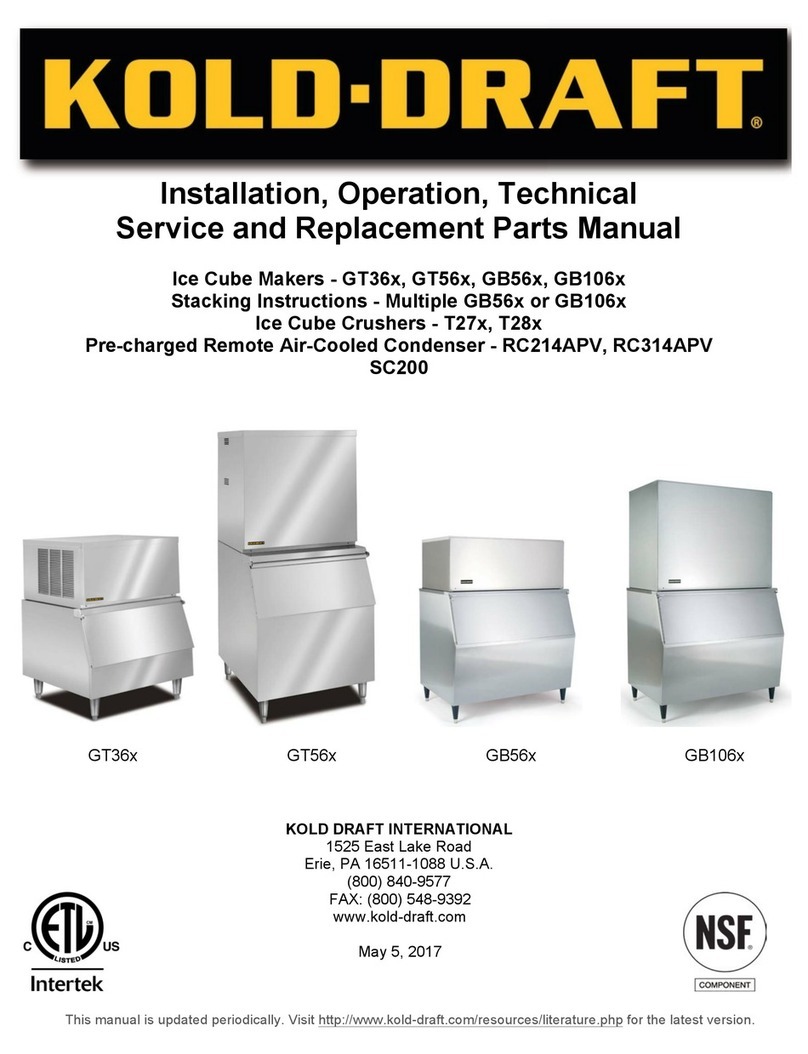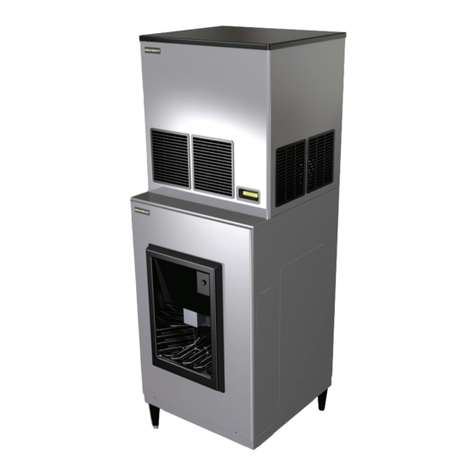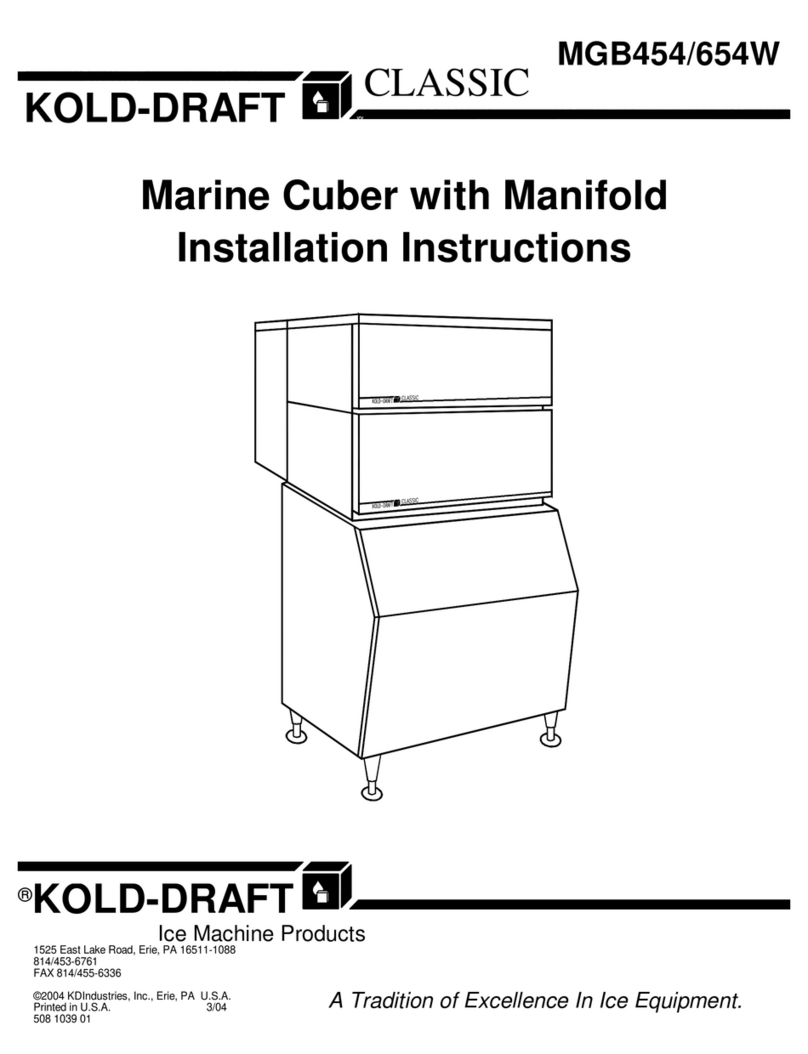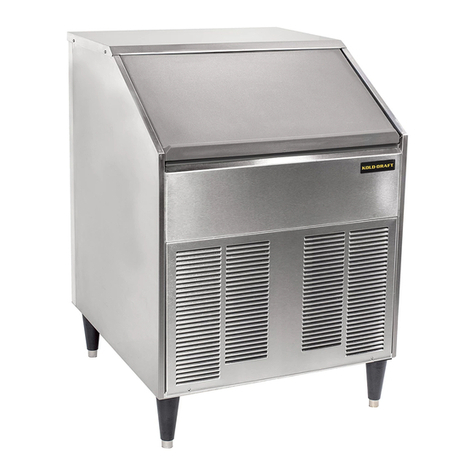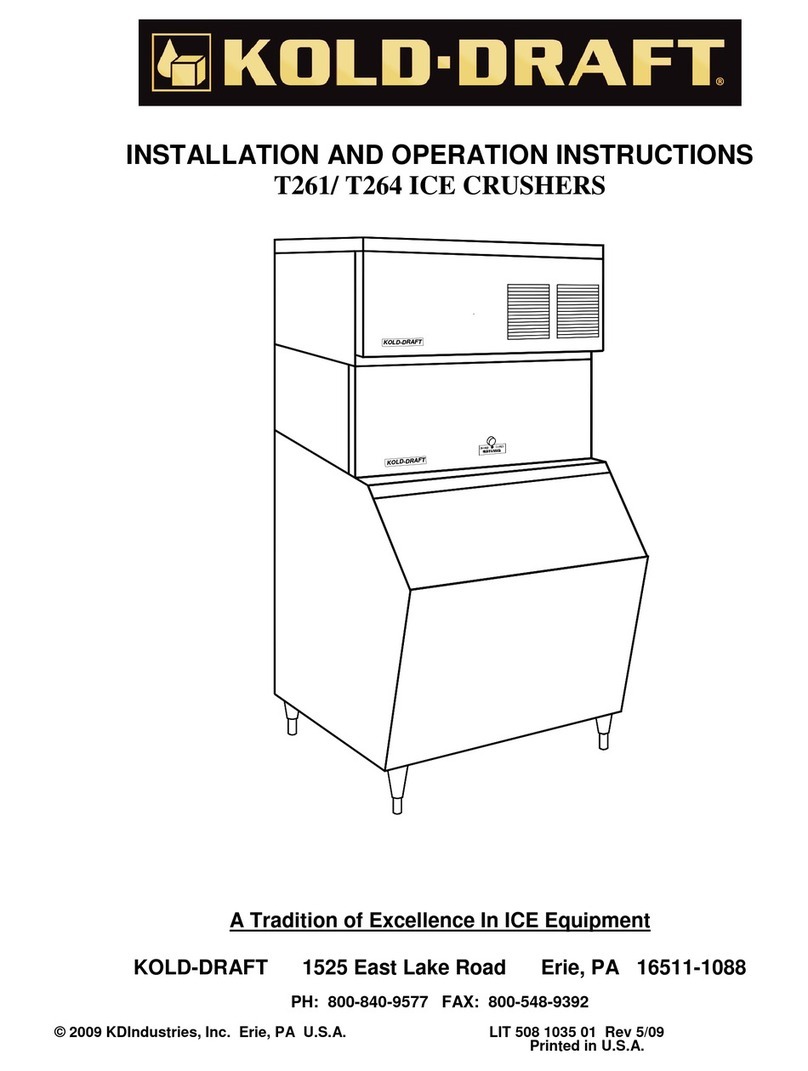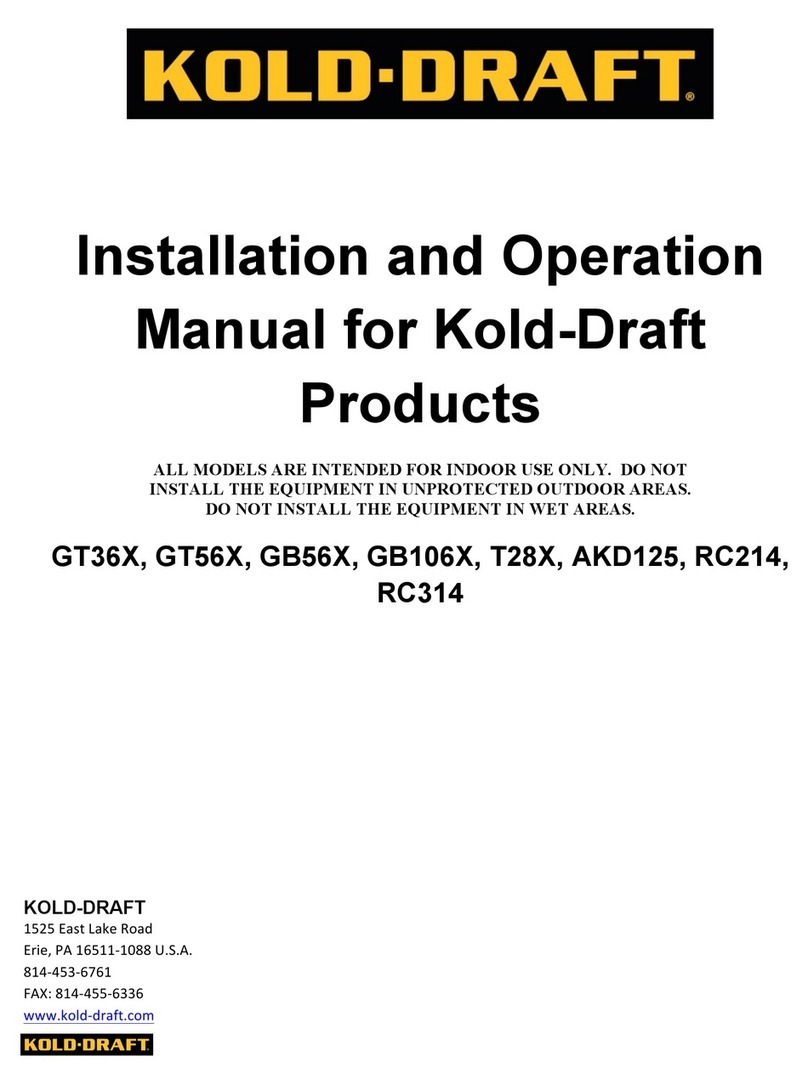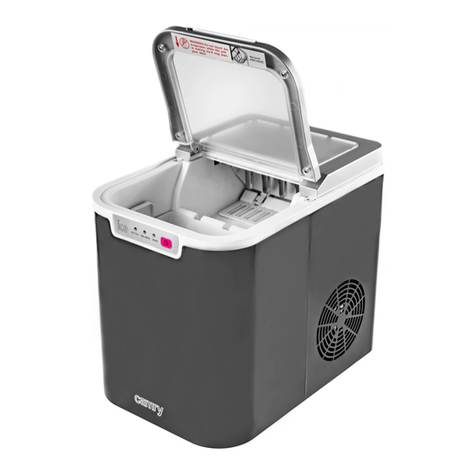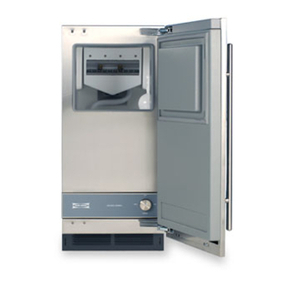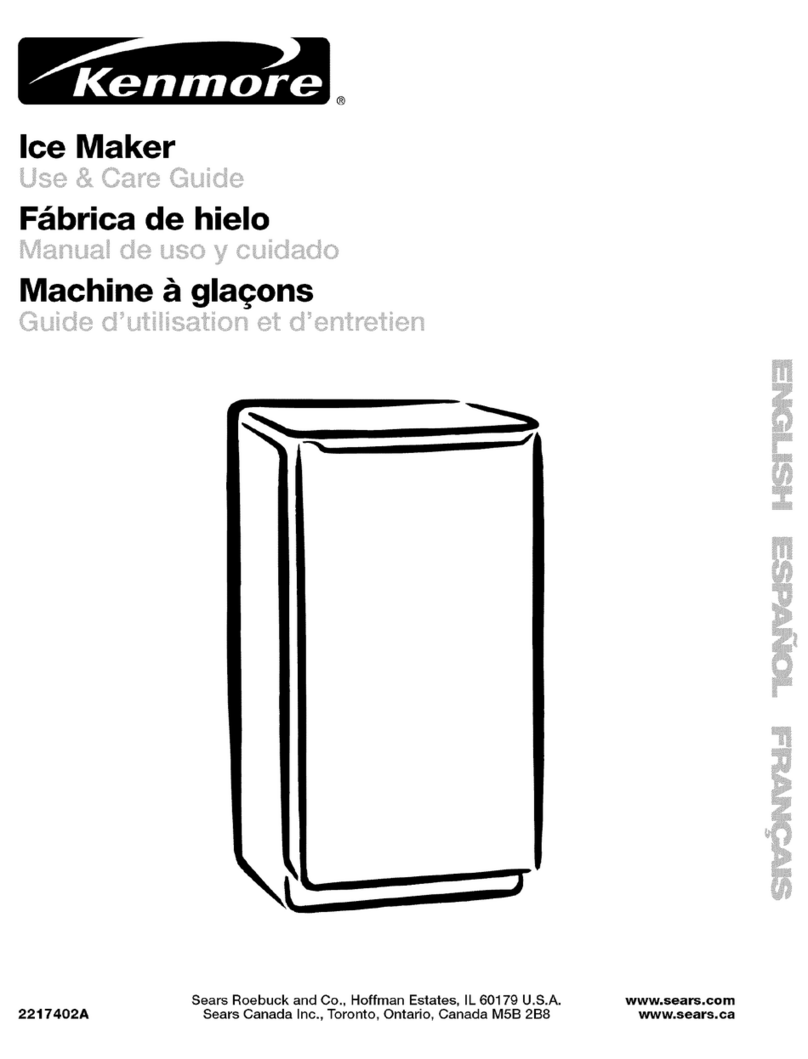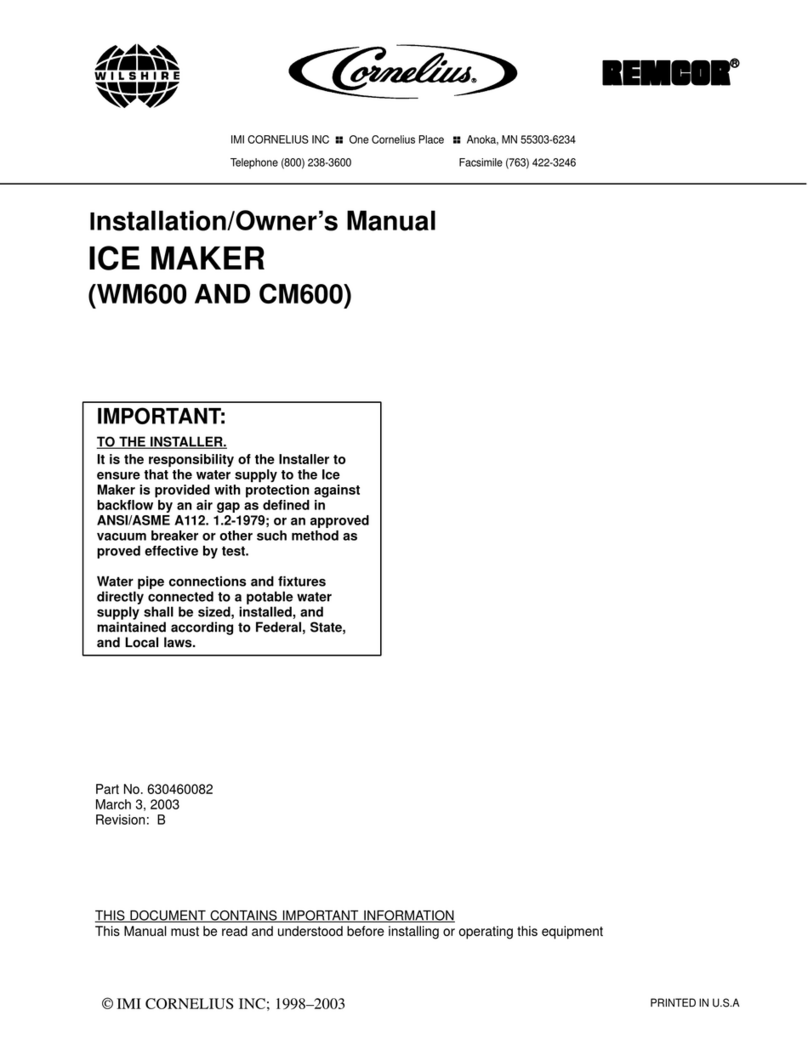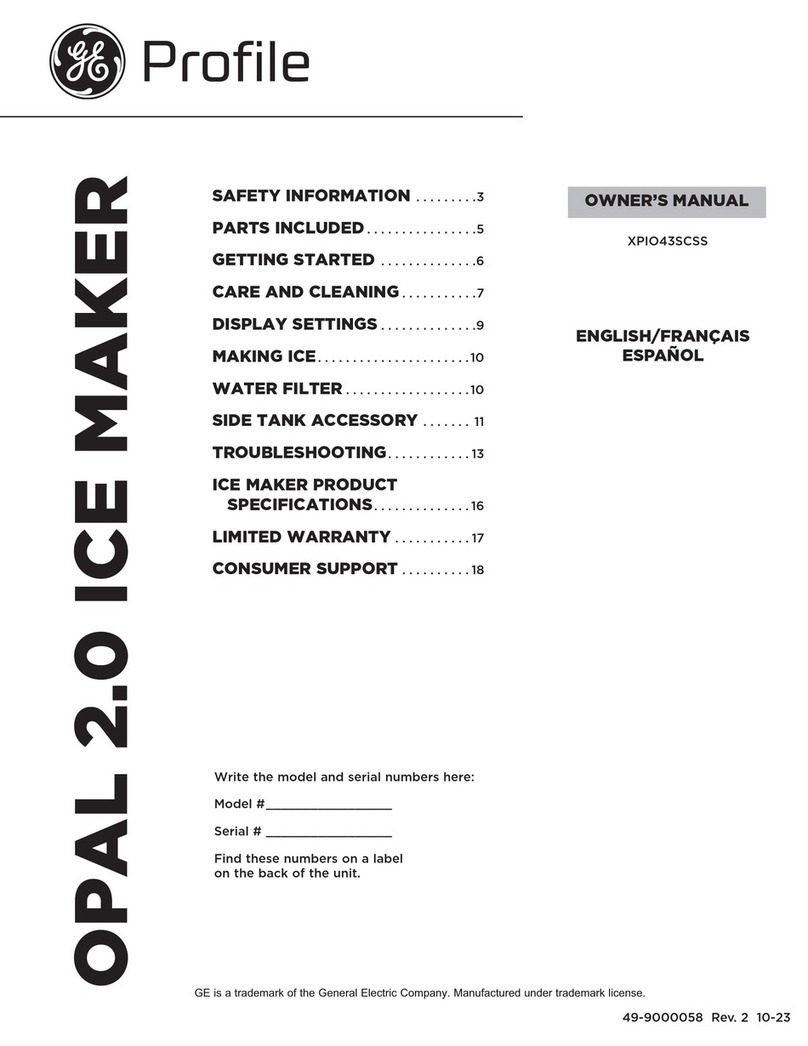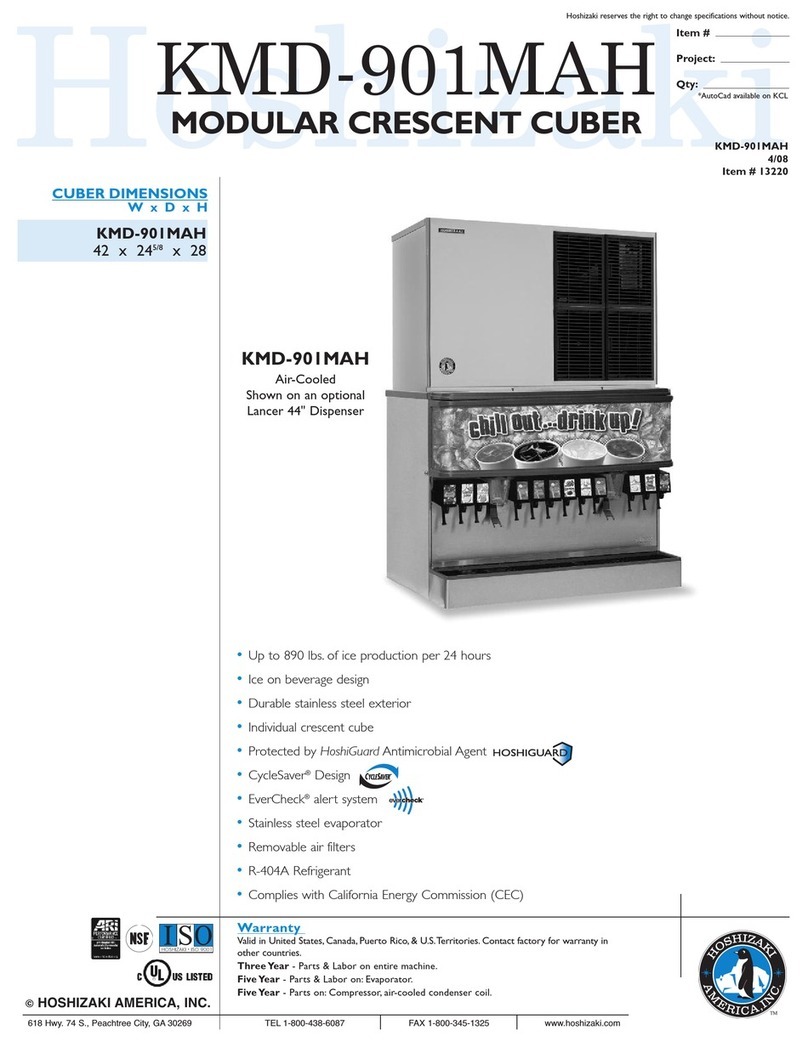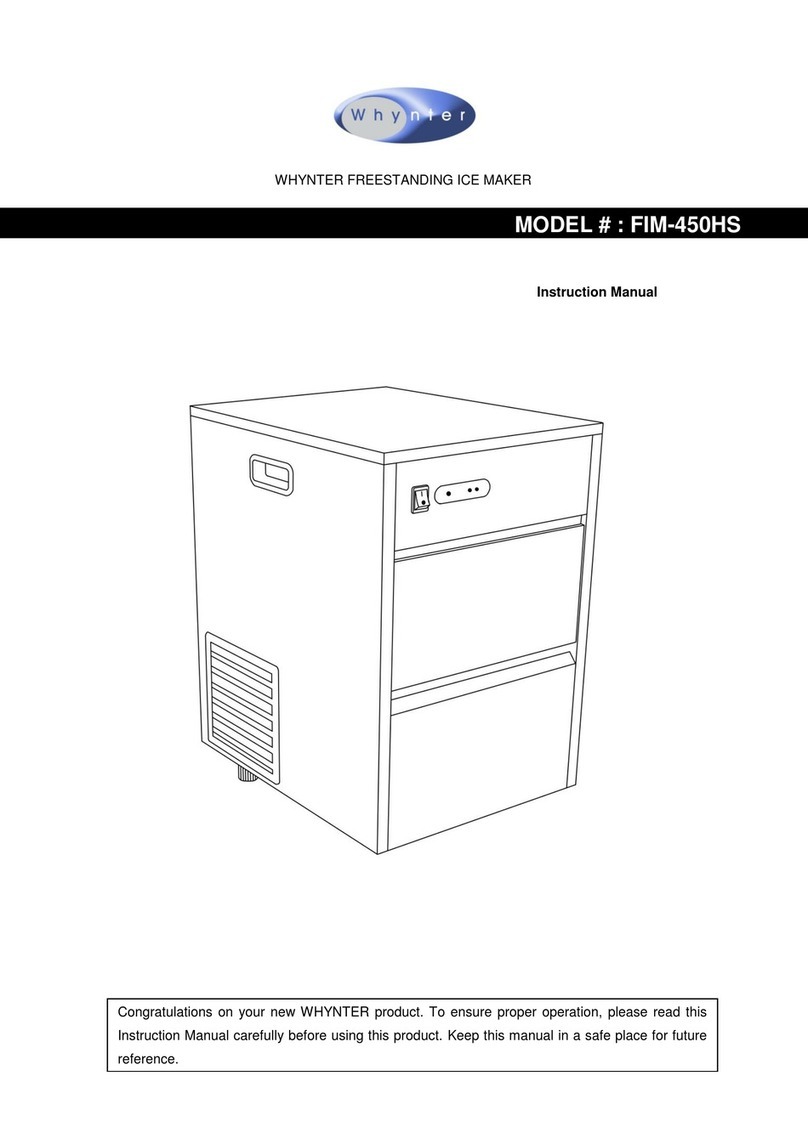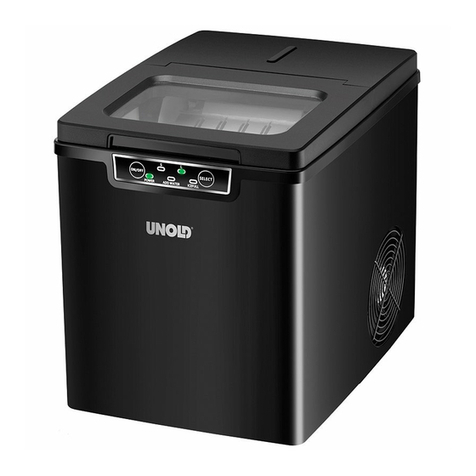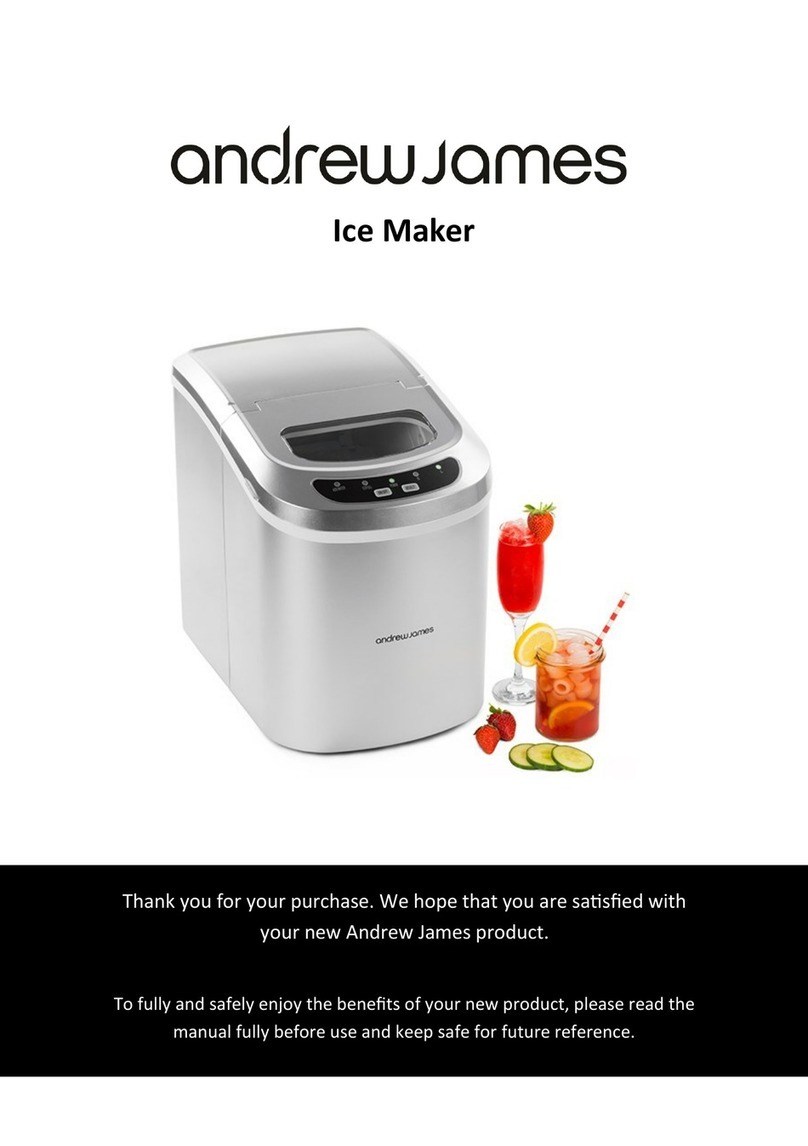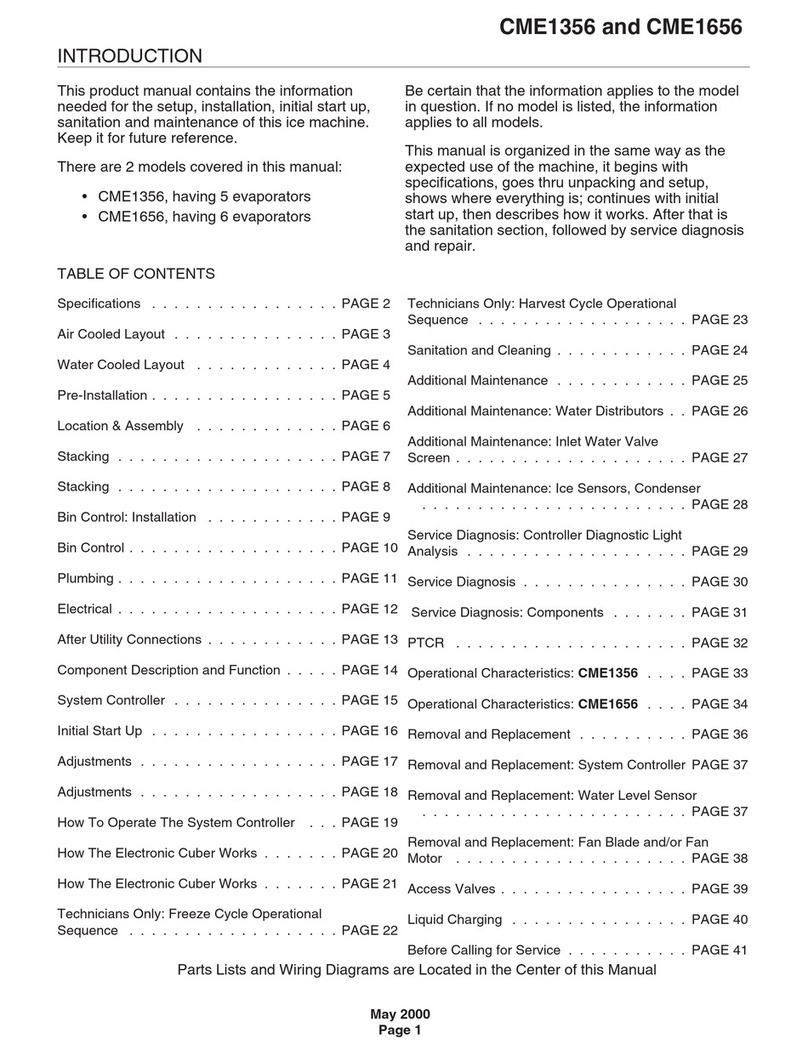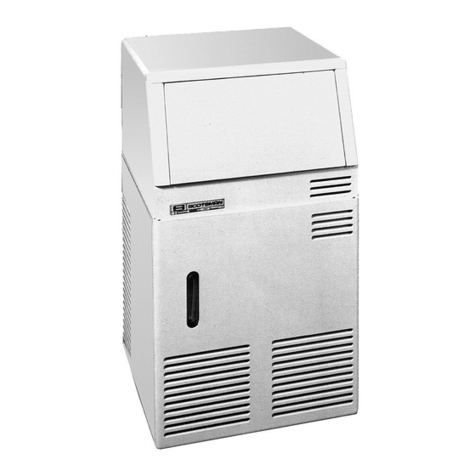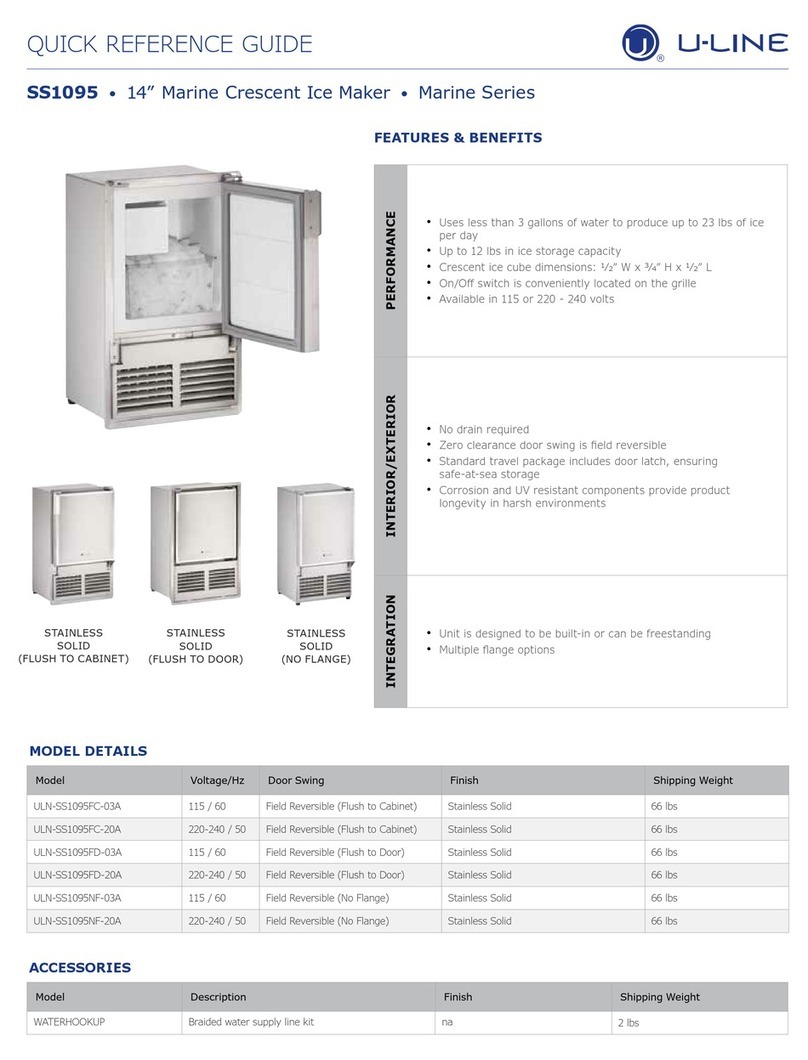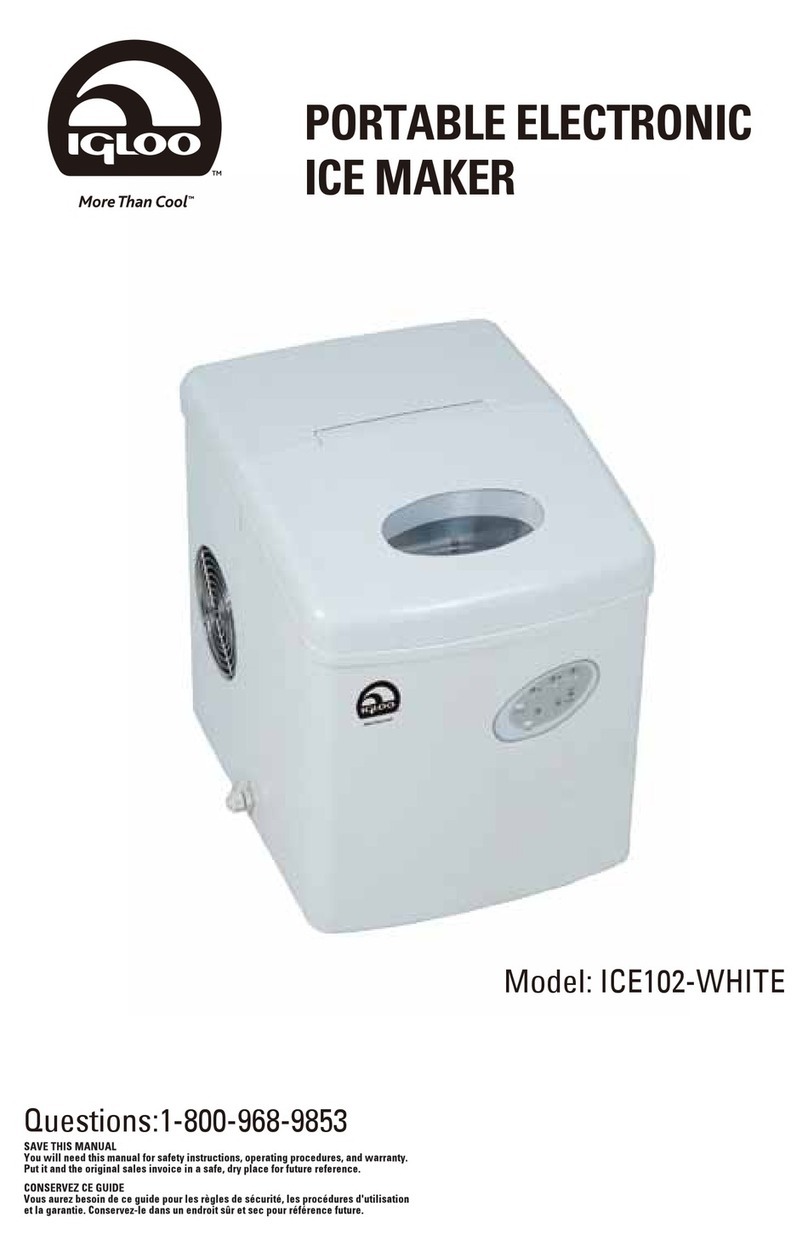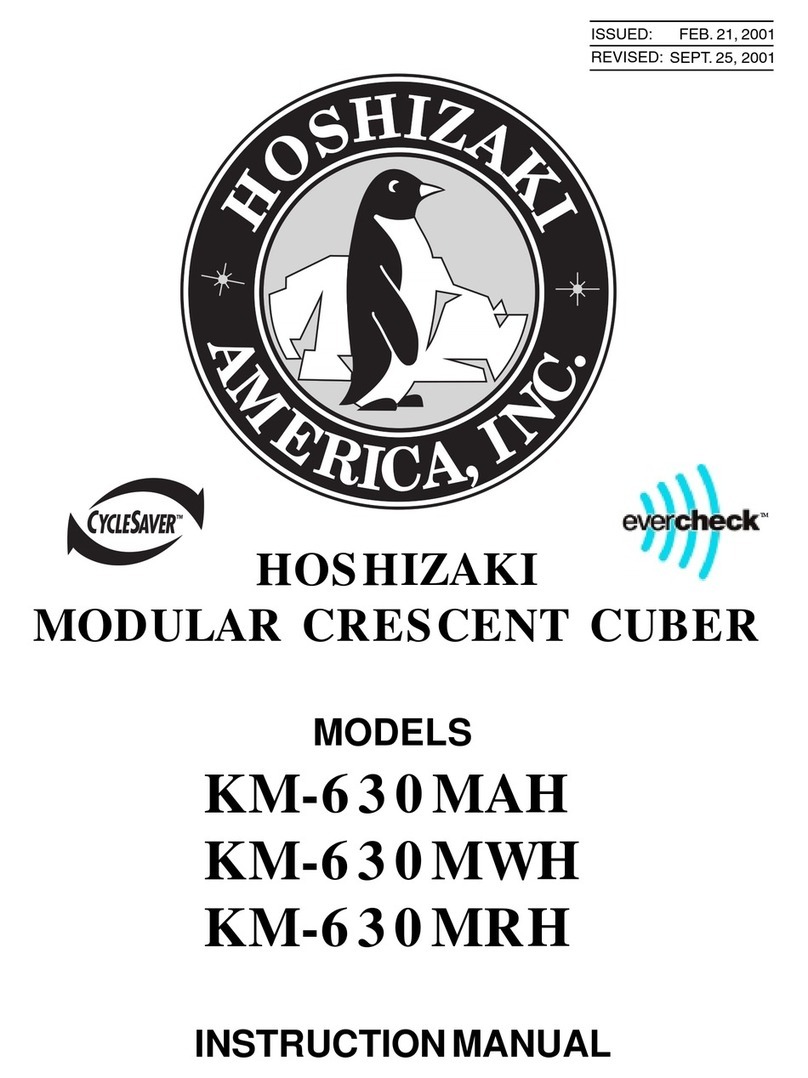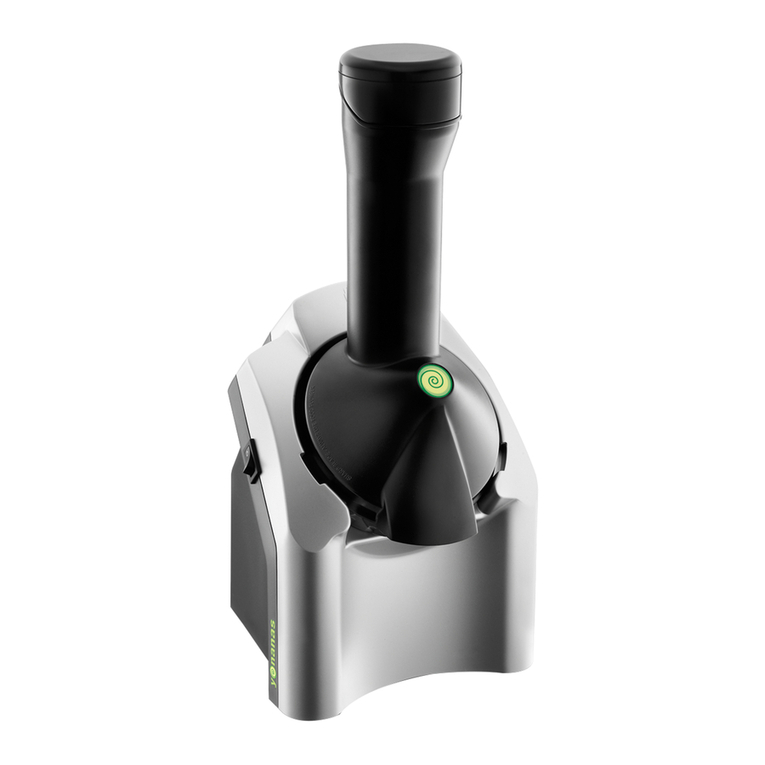
3
IMPORTANT SAFEGUARDS
Before the ice maker is used, it must be properly positioned and
installed as described in this manual, so read the manual carefully.
The supplier strongly recommends that you have a professional install
your new machine. The warranty may be affected or voided by an
improper installation. To reduce the risk of fire, electrical shock or
injury when using the ice maker, follow basic precautions, including
the following:
Plug into a grounded 3-prong outlet; do not remove grounding prong, do not use an
adapter, and do not use an extension cord.
It is recommended that a separate circuit, serving only your ice maker, be provided.
Use receptacles that cannot be turned off by a switch or pull chain.
Do not connect or disconnect the electric plug when your hands are wet.
Never clean ice maker parts with flammable fluids. These fumes can create a fire
hazard or explosion. Do not store or use gasoline or other flammable vapors and
liquids in the vicinity of this or any other appliance. The fumes can create a fire
hazard or explosion.
Before proceeding with cleaning and maintenance operations, make sure the power
line of the unit is disconnected and the water line is shut off. (EXCEPTION: when
cleaning the machine’s ice making and water systems – see pages 22-24).
Before operating, put all panels back into place.
Unplug the ice maker or disconnect power before cleaning or servicing. Failure to
do so can result in electrical shock or death.
Do not attempt to repair or replace any part of your ice maker unless it is
specifically recommended in this manual. All other servicing should be referred to
a qualified technician.
Use two or more people to move and install ice maker. Failure to do so can result
in back or other injury.
To ensure proper ventilation for your ice maker, the front of the unit must be
completely unobstructed. Choose a well-ventilated area with temperatures above
50ºF (10ºC) and below 100ºF (38ºC). This unit MUST be installed in an area
protected from the elements, such as wind, rain, water spray or drips.
The ice maker should not be located next to ovens, grills or other sources of high
heat.
The ice maker must be installed with all electrical, water and drain connections in
accordance with state and local codes. A standard electrical supply (115 VAC only,
60Hz, 15A), properly grounded in accordance with the National Electrical Code
and local codes and ordinances is required.
Do not kink or pinch the power supply cord or drain lines between the ice maker
and the cabinet.
The fuse (or circuit breaker) size should be 15 amperes.
